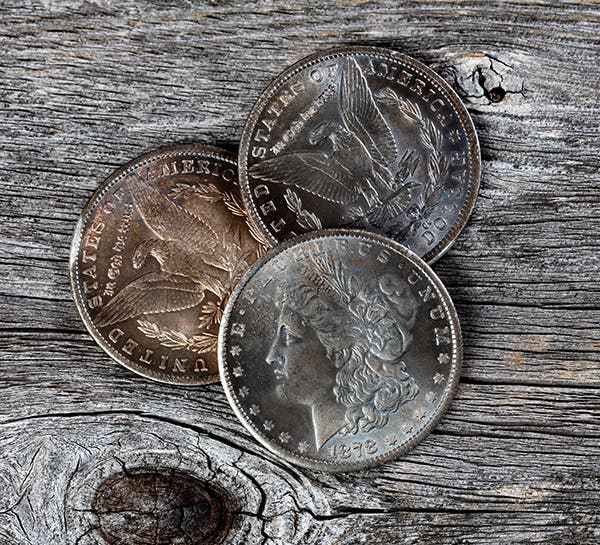Two types of collars on coin press
What is the difference between a close and an open collar? A close collar allows a lettered edge to be placed on a coin simultaneously with the obverse and reverse…
What is the difference between a close and an open collar?
A close collar allows a lettered edge to be placed on a coin simultaneously with the obverse and reverse images since the collar is slightly larger than is the planchet. The open collar allows the planchet to expand without impacting the edge.
The Virginia halfpenny is dated 1773. Were these in use after as well as before the Revolutionary War?
The coins arrived in New York in February 1774, where they waited for a year until written royal permission for their use was obtained. It wasn’t until February 27, 1775, that Virginia Treasurer Robert Nicholas published a notice the coins were ready to circulate. Due to the Revolution people hoarded many of the halfpennies, continuing to use them along with a mix of foreign coins once the war ended.
British coins have a medal rotation while those of the United States have coin rotation. How did we arrive at coin rotation?
The rotation was part of a numismatic compromise. Thomas Jefferson received the coin rotation he desired, while Alexander Hamilton got his wish coin denominations would not appear on silver or gold coins. Coin rotation means that the bottom of the reverse design is at the top if you turn a coin over from side to side. Why it turned into a dispute between Hamilton and Jefferson seems to be due to the fact that they were rivals and quarreled. George Washington was the mediator.
World War II Emergency notes feature a reverse overprint for the Pacific theater of battle (“HAWAII”). Why was there no similar reverse overprint for the North Africa theater?
The authority for each of these two emergency issues originated from different sources at different times for different purposes. Lieutenant General Delos Carleton Emmons recalled all U.S. currency (Hawaii notes are Silver Certificates or Federal Reserve Notes) that was in Hawaii while setting limits on how much cash any individual or business could hold. The Hawaii notes were printed in San Francisco, not Washington D.C. U.S. troops in Africa and during the Sicilian campaign were paid in “North Africa” notes. Both were issued in fear the enemy might capture and use our money. However the Hawaii notes were later used to redeem Japanese military yen. Each issue was meant to be distinguishable from the other. However the yellow seal was also easier to substitute for the normal blue since yellow is a primary rather than a tertiary color.
E-mail inquiries only. Do not send letters in the mail. Send to Giedroyc@Bright.net. Because of space limitations, we are unable to publish all questions.
This article was originally printed in Numismatic News. >> Subscribe today.
More Collecting Resources
• Check out the newly-updated Standard Catalog of World Coins, 2001-Date that provides accurate identification, listing and pricing information for the latest coin releases.
• When it comes to specialized world paper money issues, nothing can top the Standard Catalog of World Paper Money, Specialized Issues .








